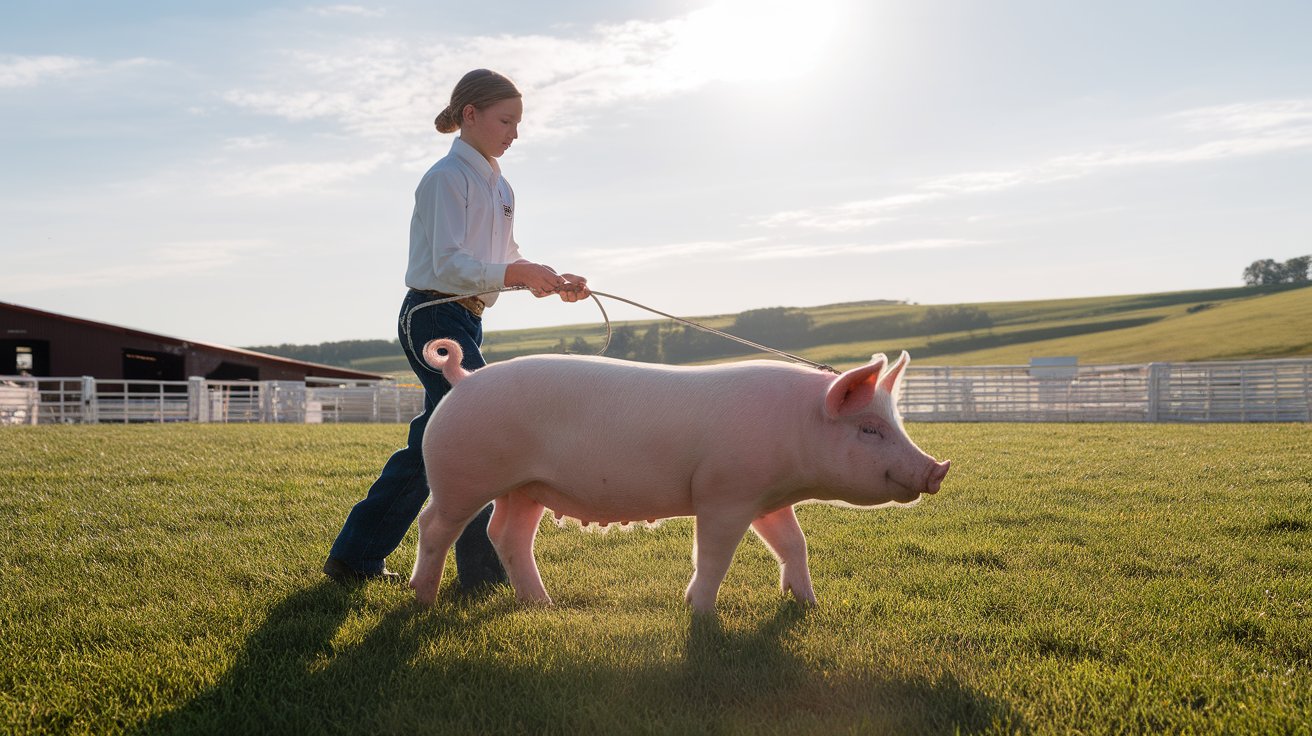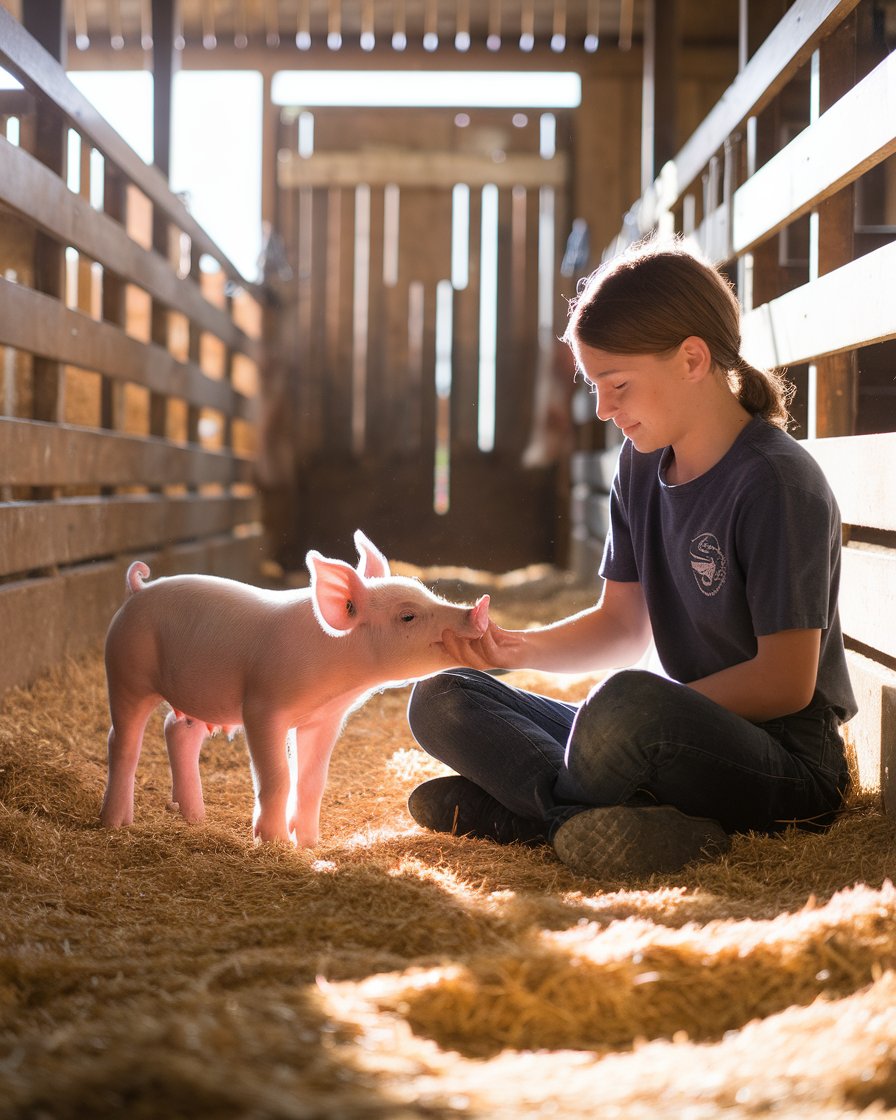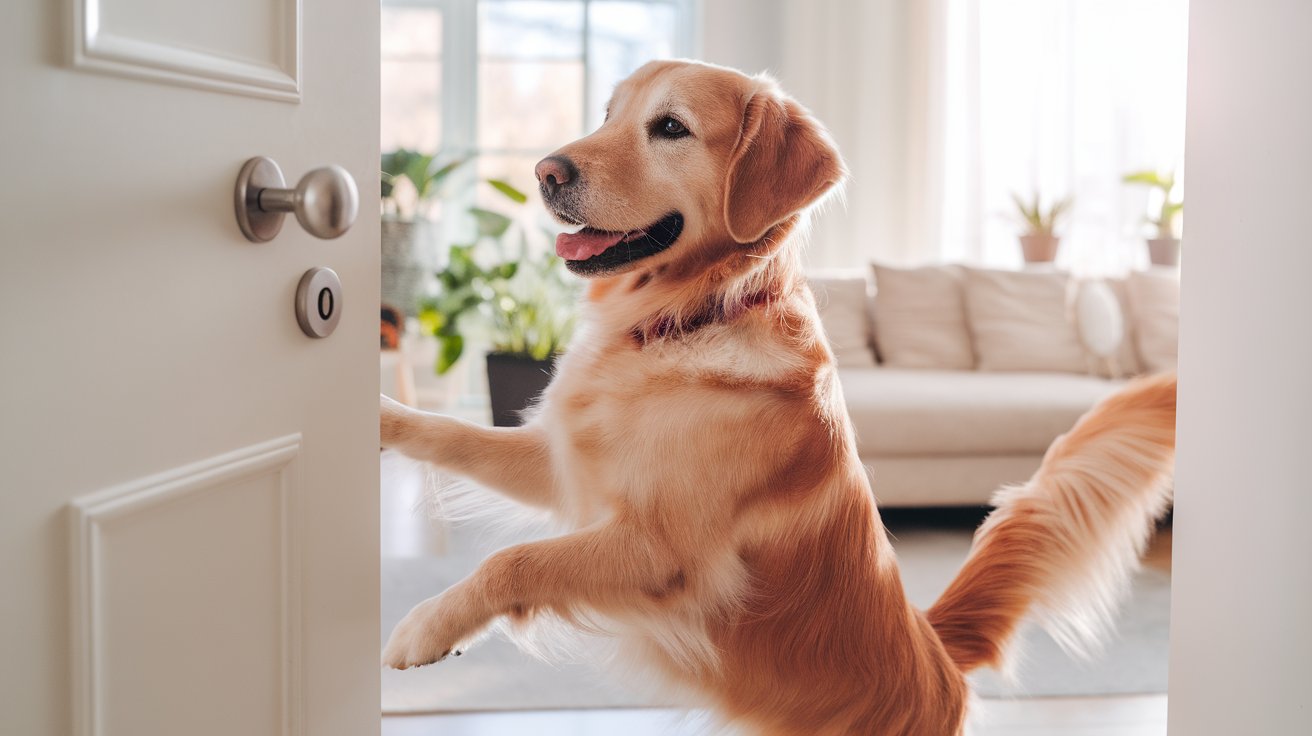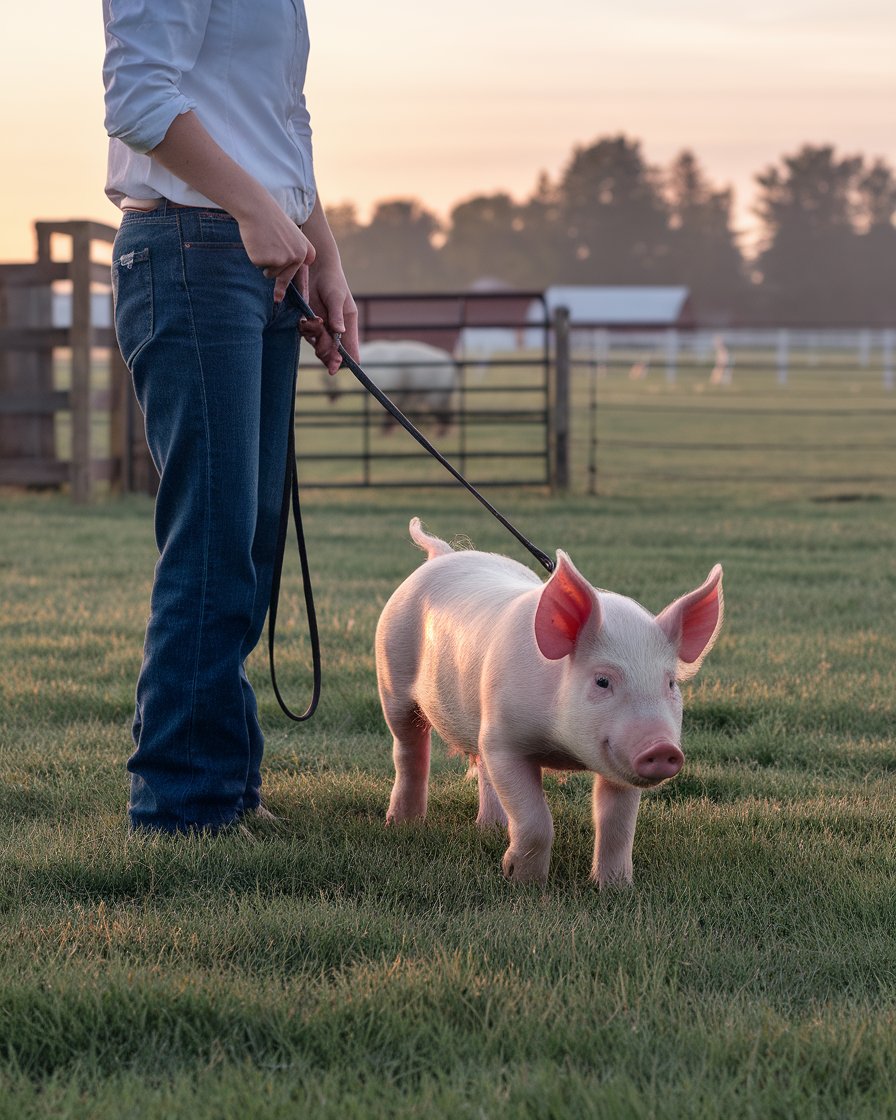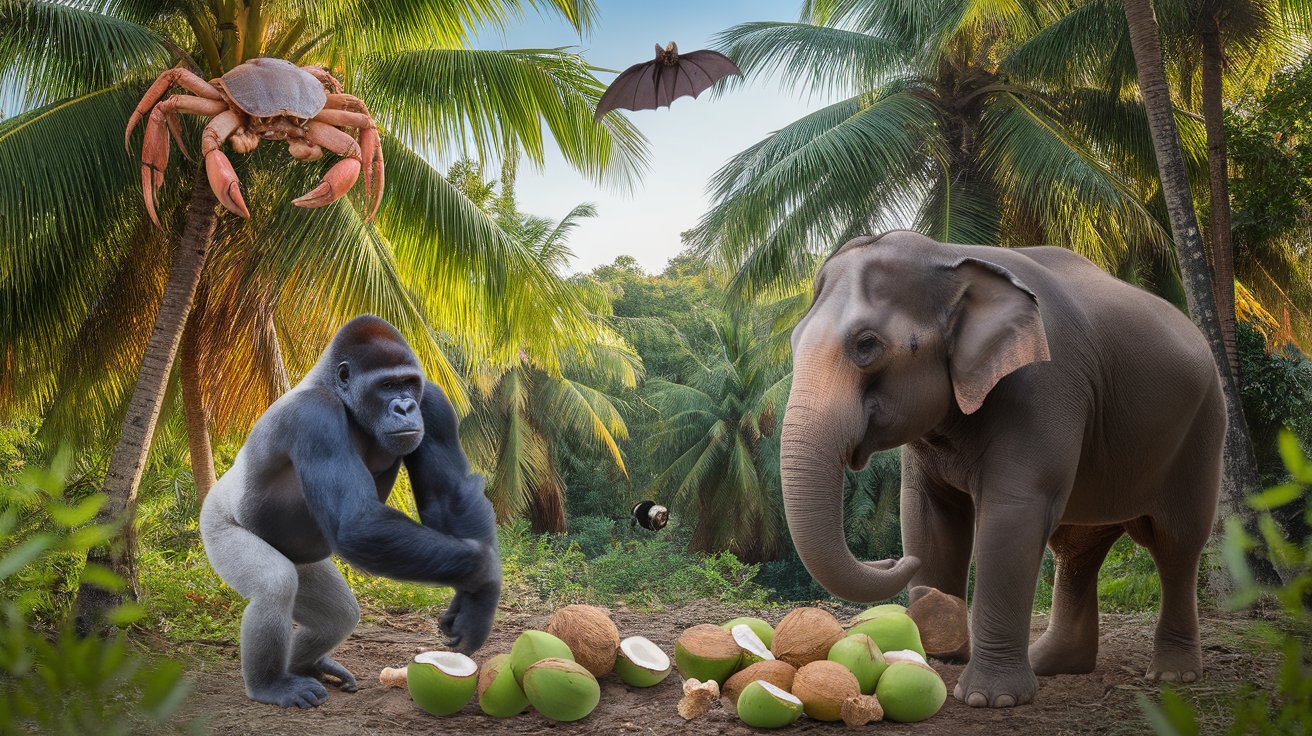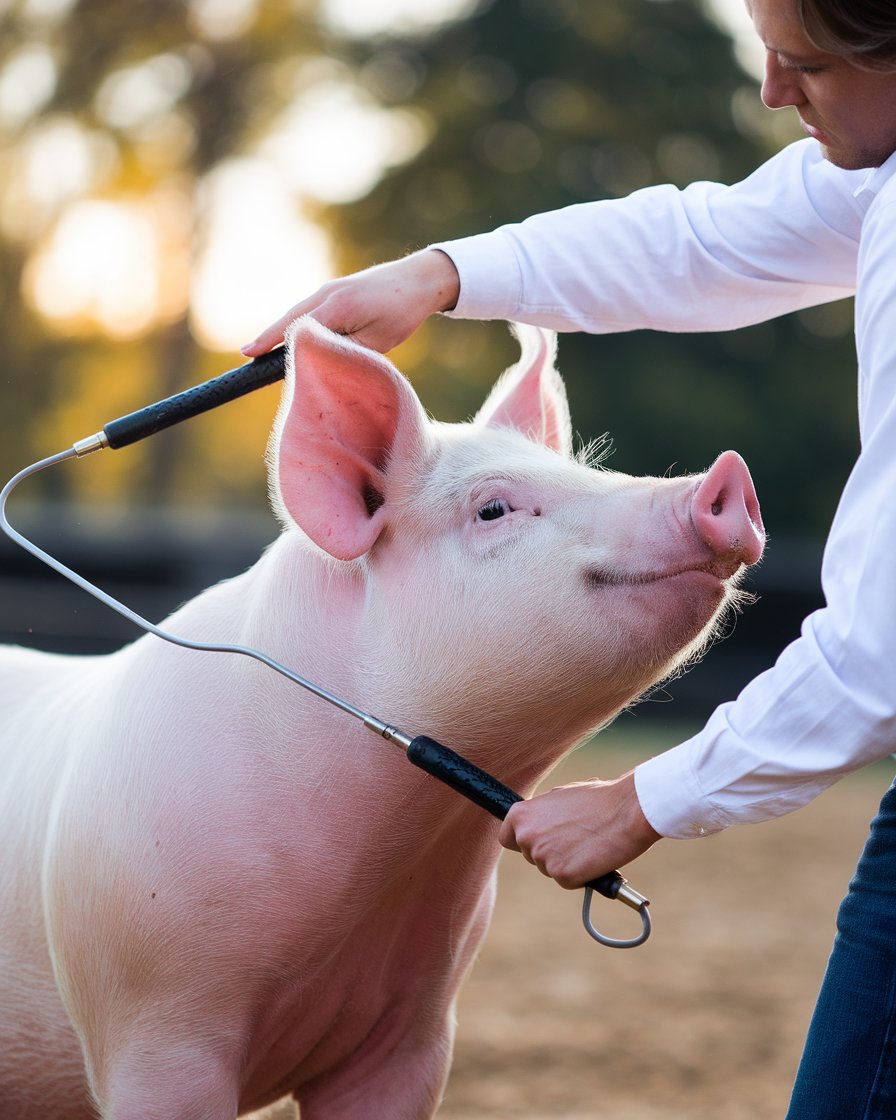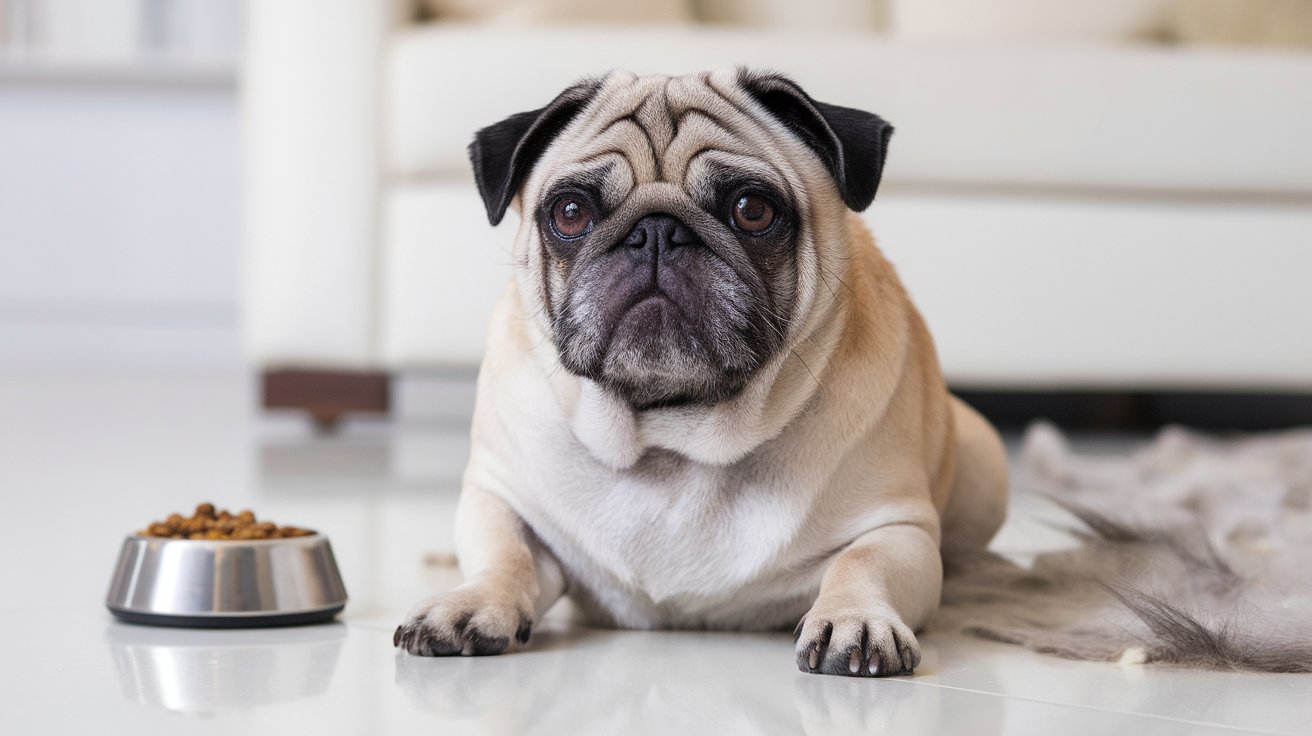Introduction
Taming and training a show pig takes dedication, patience, and the right techniques. From day one, it’s important to focus on building trust with your pig and creating a calm environment where they can feel safe. Whether you’re working with a new show pig or refining the skills of one already in training, consistency is key. Daily exercises, such as walking with a whip or practicing in big circles, gradually prepare your pig for the show ring. Training is a process that can’t be rushed, but when done correctly, your pig will become show-ring ready and confident.
As you train show pigs, it’s essential to pay attention to the finer details, like head positioning and endurance. Start slow, guiding your pig gently with a whip and not fear. Over time, you’ll notice improvement, especially if you break training into manageable sessions. The quality of exercise matters more than the length of the time spent, so always aim for focused, effective training. These efforts will lead to a pig that’s not only physically fit but also mentally prepared to perform.
Key Takeaways
- Building trust with your show pig from day one is essential to create a calm and familiar environment for effective training.
- Gradual, patient training sessions using a whip help guide your pig without fear, encouraging proper posture and confidence.
- Consistency in training, such as walking in big circles, helps improve both physical stamina and mental focus for the show ring.
- Focus on the quality of exercise, ensuring short but effective sessions that reinforce positive behaviors in your pig.
- Avoid overheating by scheduling training sessions during cooler times of the day and ensuring your pig stays hydrated.
- Patience and careful attention during training help prevent bad habits, ensuring your pig is show-ring ready and confident.
Taming Your Show Pig
Taming a show pig is a delicate process that requires patience and consistency. From the moment you bring your pig into the barn, it’s essential to create an environment that feels calm and familiar. This helps the pig get used to its new surroundings, making it easier for them to adapt. Pigs can be anxious on day one, so spending time with them in a large grassy area where they can roam freely is a great start. Establishing this initial connection sets the stage for successful training down the line, helping your pig feel comfortable and ready to face the challenges of show day.
Tips for Training Show Pigs Successfully
-
Start with a Calm Environment
The first step to training your show pig is to introduce them to a calm and familiar environment. Pigs can be sensitive to new surroundings, so it’s essential to let them explore in a stress-free manner. Creating this peaceful setting helps your pig feel comfortable, which is the foundation for effective training later on. -
Establish Trust with Simple Actions
Building trust with your pig is crucial to smooth training. Spending time hand-feeding, gently petting, and letting your pig get used to human contact helps them feel safe and secure. These small, consistent actions will make them more receptive to future training techniques, reducing anxiety and making the process easier. -
Use the Show Whip Gradually
Introducing a show whip should be done gradually to avoid overwhelming the pig. Begin by gently guiding your pig with the whip, touching it under their chin to encourage them to hold their head up. This technique helps the pig associate the whip with guidance rather than fear, making them more confident in the show ring. -
Break Training into Manageable Sessions
Instead of long, exhaustive training sessions, break them into shorter, focused intervals. This not only keeps your pig from getting tired but also ensures they stay engaged and responsive throughout the process. Over time, these consistent, smaller sessions will yield more effective results. -
Practice Walking in Open Areas
Walking your pig in large, open areas, like grassy fields, helps them build endurance and become comfortable with show movements. This type of exercise mimics the larger circles they’ll be required to navigate in the show ring, preparing them for the physical demands of competition. -
Reinforce Positive Behavior with Rewards
After each training session, reward your pig with affection or treats to reinforce positive behavior. This practice helps them associate training with something enjoyable, making them more cooperative during future sessions. Building a routine of reward-based training keeps your pig motivated and engaged.
Building Trust and Comfort
The first step to training your pig is to develop trust. Livestock animals like pigs can be wary of new people and environments, so taking time to build a bond is crucial. Simple actions such as hand-feeding, petting, or letting them touch your hand can help them feel safe. The more time you spend with them in these early stages, the calmer they will become. By being patient, you can get them used to being handled, which will make the training process smoother and more effective.
Introducing the Show Whip
Once your pig feels comfortable, it’s time to introduce the show whip. The key is to do this slowly, ensuring the pig doesn’t become afraid of it. Using the whip to guide their movements, gently touch underneath their chin to encourage them to hold their head high. This is an important part of getting your pig ready for the show ring. Respecting the whip is crucial, as it helps them understand direction without instilling fear. With patience, your pig will learn to respond well, making them show-ring ready.
Early Training Steps
Training a show pig begins with creating a comfortable environment where the pig feels secure and familiar with its handler. The early stages of training are crucial for building a strong foundation that sets the tone for future success. Handlers should avoid rushing the process and instead focus on making the pig feel at ease. By gradually introducing new tasks, such as walking with the whip, and maintaining a calm and patient demeanor, handlers can establish trust with their pig. This trust is essential to ensure the pig remains calm and cooperative during training and, ultimately, on show day when the pressure is on.
Case Study: Successful Show Pig Training Using Early Techniques
A 2021 case study conducted by the Iowa State University Extension and Outreach focused on training show pigs from an early stage, highlighting key steps for success. The study followed a group of handlers working with new show pigs, emphasizing the importance of creating a calm environment. The pigs were introduced to their handlers through gentle interaction, such as hand-feeding and soft brushing. This early connection helped the pigs feel at ease, building trust that set the stage for successful training.
The handlers implemented a structured training routine, gradually introducing the whip as a guiding tool. By starting with short walking distances and using gentle taps on the pigs’ sides, the handlers reinforced positive behaviors. Over time, the pigs showed marked improvement in walking patterns and responsiveness. Consistency, short training sessions, and positive reinforcement were key elements in preventing bad habits and ensuring the pigs were ready for the show ring.
Teaching Walking with a Whip
Once the pig is familiar with its surroundings and handler, the next step is teaching it to walk using a whip. This process must be slow and deliberate to avoid creating any bad habits. Begin by having the pig walk short distances, gently tapping its sides with the whip to encourage movement. If the pig hesitates or tries to run back to the pen, having a second person guide them with a sorting panel can help keep them on track. With consistent practice, the pig will start responding positively, learning to walk with the whip and remain focused during training sessions.
Preventing Bad Habits
Training sessions should be short but effective, as the quality of each session is more important than the length. During these sessions, handlers should focus on guiding the pig correctly, ensuring that it follows commands without becoming overwhelmed. After each successful session, rewarding the pig with affection reinforces good behavior. Maintaining consistency throughout the training process is vital to prevent bad habits from forming. Patience is key, and by avoiding rushed exercises, handlers will help their pigs build endurance and become show-ring ready, ultimately leading to a successful performance.
Training Techniques
Effective training techniques for show pigs focus on refining their posture, stamina, and overall responsiveness to commands. These skills are essential for making a strong impression in the show ring. Training should be consistent and thoughtful, ensuring the pig learns to maintain a calm and confident demeanor. By incorporating exercises that promote both mental and physical growth, handlers can prepare their pigs for the challenges of competition. Additionally, introducing specific tools like the whip in a controlled and positive manner will help reinforce good habits and prevent unwanted behaviors from developing. The key is patience, practice, and the proper use of training aids.
Using Two Whips for Head Training
Training pigs to keep their heads up is an important aspect of show preparation, and starting with two whips can be an effective strategy. By holding one whip parallel to the pig’s head and another gently under its chin, handlers can guide the pig into the proper posture. This dual-whip technique helps the pig understand the desired head position more clearly. Over time, as the pig becomes comfortable, handlers can switch to using just one whip, reinforcing the behavior without overwhelming the animal. It’s essential to remember that a pig’s head should not be too high, as this could cause discomfort during the show.
Grass Area Circles for Stamina
Building stamina is just as important as teaching proper posture. Walking pigs in large, grassy areas provides an excellent way to increase their endurance. By starting with short sessions, typically around 5-10 minutes, handlers can slowly extend the duration as the pig becomes more conditioned. This exercise mimics the long strides and larger circles that pigs will experience in the show ring. Not only does this help with stamina, but it also allows the pig to become accustomed to the type of movement required for a successful show performance. Gradually increasing the exercise time ensures that the pig is able to withstand the physical demands of competition.
“Patience, persistence, and perspiration make an unbeatable combination for success.” – Napoleon Hill
Source: BrainyQuote
Exercise and Timing
Exercise plays a vital role in preparing show pigs for competition, as it helps develop their stamina and ensures they are physically fit for the show ring. Proper timing and structure of exercise sessions are equally important. Handlers should aim to build a routine that allows the pigs to gradually increase their endurance without causing unnecessary stress. Balancing exercise with rest and care will keep the pigs in optimal condition, helping them perform well on show day. Timing these exercises to avoid extreme temperatures will also prevent any health complications, ensuring the pigs are comfortable and ready for the challenge.
Duration and Frequency of Walking
When beginning exercise routines for show pigs, it’s crucial to start small and gradually build up. A good practice is to start with walking sessions that last between 5-10 minutes daily. This helps pigs adjust to the new activity without becoming exhausted. As the pigs’ stamina improves, handlers can increase the length of these sessions, eventually preparing the pigs for the longer walks they’ll experience in the show ring. Consistency is key—maintaining a routine allows pigs to associate the walking with positive outcomes, helping them become more responsive and focused during competitions.
Avoiding Overheating and Stress
Exercise sessions should be scheduled with the pigs’ comfort in mind, especially during warmer months. To avoid overheating, it’s best to walk pigs either in the early morning or late evening when temperatures are cooler. Pigs are sensitive to heat, and overheating can lead to health issues, affecting their performance in the show ring. Providing ample water and allowing them time to cool down after each session is essential for their well-being. By keeping these factors in mind, handlers can ensure their pigs remain healthy and stress-free, ready to excel in competition without any unnecessary strain.
Conclusion
Training a show pig takes time, patience, and the right approach. By focusing on trust and comfort from the very start, you set your pig up for success in the show ring. Whether you’re working on posture, stamina, or responsiveness, consistency is the key to positive results. Incorporating gentle exercises like walking with a whip and practicing in a large grassy area helps prepare your pig for the physical demands of competition.
As you continue training your pig, paying attention to small details, like keeping their head positioned correctly and avoiding stress, will ensure they’re show-ring ready. Be mindful of proper feeding, the timing of exercises, and cooling down after sessions to keep your pig healthy and focused. Every time you train, remember that patience leads to success, and with the right techniques, your pig can become a true champ in the ring.

